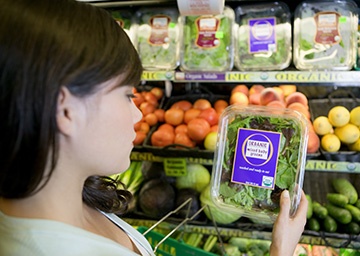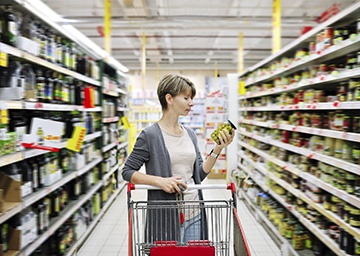
Food companies have to keep all sorts of issues in mind when considering their packaging decisions. There are a number of interesting trends spilling into the mainstream that are redefining food packaging. Let's take a look at the top 10 challenges for those who are responsible for food packaging.
Need food packaging expertise? Victory Packaging has fresh ideas.
See how we helped a food processing customer improve performance.
1. Information Is Spreading.
Today’s consumers can access a seemingly unlimited amount of information through the World Wide Web. This data can be accessed on traditional computers, as well as tablets and smartphones. Social media plays an especially large role in the spread of information about food, current events and society. There is no doubt that this “information age” is changing food, as well as its packaging. Customers can search for food and its respective ingredients with ease. The bottom line is that the typical customer's experience with food is changing in a dramatic fashion. Food packagers must be cognizant of this fact and respond appropriately.
2. Food Is Becoming Globalized.
Food no longer circulates within a single community or country. Plenty of people eat food that was grown in other parts of the world. Most people desire authentic and exotic foods that stimulate the palate. Millennials are especially interested in trying new foods from different parts of the globe. As the number of foods we eat increases, the packaging must be altered. Sturdy packaging will prevent food from becoming damaged as it travels around the world. Often, the packaging design is equally important to consumers. If the packaging does not reflect the style or origins of the food, it won't be as attractive to consumers.
3. Consumers Don’t Need to Compromise.
Modern day living allows consumers to obtain the foods they crave whenever they desire. Hop onto the Web and you can buy just about any type of food. Packaging helps to enable these experiences. It creates an aesthetic differentiation between the different types of foods, enabling consumers to better determine if the product is something they might enjoy. Food flexibility is so widespread that consumers can even purchase organic products on-demand through a variety of markets, restaurants and other vendors.
4. Lifestyle Determines Product Choice.
Packaging plays a part in convincing the customer whether or not a particular food fits his or her lifestyle. The first thing consumers see when looking at a potential food item is its packaging. It is imperative that the packaging engages customers and validates their identities. The packaging should communicate its characteristics including descriptors such as low-fat, low-sodium, vitamin-rich, etc.
5. Consumers Expect to Be Engaged.
Consumer engagement begins with food packaging. Today's digital printing technologies create opportunities to appeal to consumers in a variety of ways, whether on an emotional, personal or local level. Food packagers should take advantage of this opportunity to decorate their products in a manner that appeals to their target audience.
6. Consumers Demand More Information.
Today's consumers desire packaging that communicates the merits of the contained items in a clear and cogent manner. This is the information age. If fresh produce packaging fails to communicate the exact features of the food, shoppers will turn away. However, food packagers should not overload their packaging with an abundance of information. Too much information can bombard the senses and confuse consumers. Be direct with clean labeling that explains the food's characteristics in layman's terms.
7. Flexibles Are So Popular, How Do You Differentiate?
There is a new wave of sturdy, but flexible packaging hybrids that provide an array of benefits. Make a push toward innovation by incorporating these highly functional packages. They have a fantastic shelf presence, excellent functionality, and even provide environmental benefits.
8. Consumers Want More Green Packaging.
Food packagers should constantly remain on the prowl for environmentally friendly packaging beyond the traditional “green” varieties. Though the industry is making an effort toward being green and recycling, much more can be done. As humanity becomes more concerned with the planet's dwindling resources, consumers will opt for food that is packaged in a sustainable manner. Brands that fail to change with the times and implement alternative-use/eco-friendly packaging will lose their competitive edge.
9. Consumers Expect Right-Sized Products.
When it comes to food packaging, size really does matter. Brands that offer an array of pack sizes will find that customers reward them with their dollars.
10. Consumers Rely on Mobile Phones.
The mobile environment is the new front line in the war for consumers' money. Mobile-oriented packaging that taps into Bluetooth low-energy and near-field communication will only continue to grow. Brands that evolve with these changes in technology will be better able to engage with shoppers.



